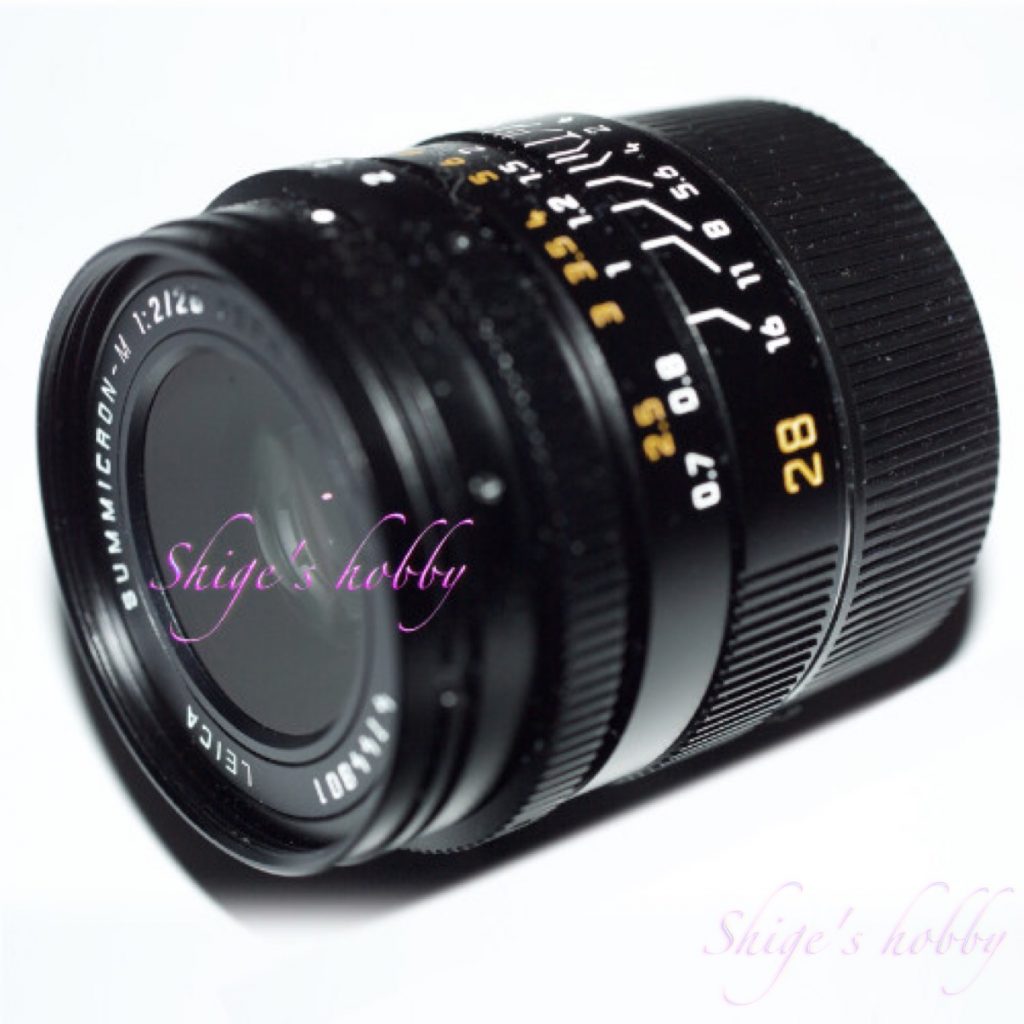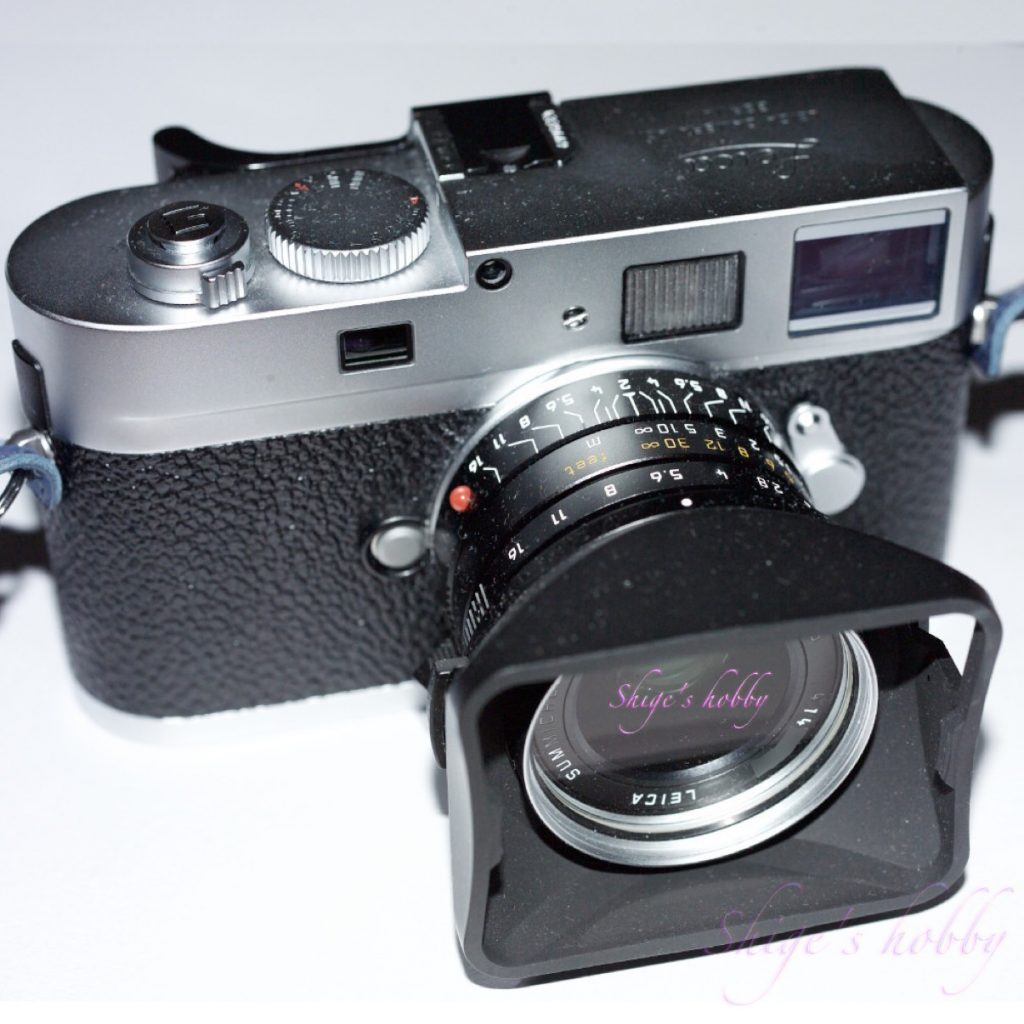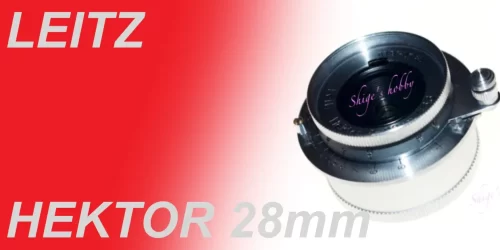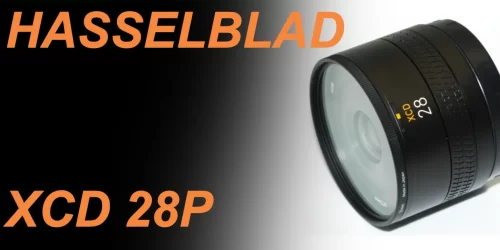LEICA SUMMICORN M 28mm ASPH.
Review and Photo example of the Summicron M 28mm F2 ASPH..
Table of contents
Gallery
- LEICA SUMMICRON-M 28mm F2 ASPH. Photo Example(with Leica M9P)
Review
The Summicron 28mm is a Leica M-mount wide-angle lens released in 2000.
In 2016, the exterior was renewed and the hood was changed from a hook type to a screw type.
The lens configuration has not changed throughout, and it has been a highly complete lens since its release.
It is characterized by the use of an aspherical lens, and is approximately the same size as the 4th generation Elmarito 28mm that was released earlier, and the lens barrel design is also almost the same, but the interior of the lens is significantly different due to the difference in lens elements.
The differences in lens barrel design include the design of the aperture ring and the minimum aperture value of F16 for the Summicron.
The hood (12451/12547) is common to both. The difference in the hood model number is that 12547 is only stamped with M2.8/28, and 12451 is double stamped with M2/28 and M2.8/28. 12547 was sold when the Elmarito was released, and the model number was changed later because the Summicron, which uses the same hood, was released.
Lens recognition 6bit code can be added to lenses without code. Depending on the year of manufacture, some older lenses may have a 6-bit code added to them, and all updated lenses will have a 6-bit code added to them.
The Summicron M 28mm is a lens that uses an aspherical lens, ahead of the 5th generation Elmarito M 28mm. I was debating whether to buy the 4th generation Elmarito or the Summicron, but at the time the price difference was about 50,000 yen, so I decided to buy the Summicron. Nowadays, the price of Summicron has increased considerably and it has become a luxury item.
I used the lens with the LEICA M9-P, a modern lens that gives a unique sense of resolution in images, and I had no major complaints.
The hood that came with the early Summicron 28mm was made of thick plastic and didn’t look good, but I think the screw-in hood after the renewal has become cooler.
This may be a problem unique to the lens I owned, but the backlight resistance was not good, and under harsh conditions where the sun was directly in front of the subject, a bead-like flare could be seen.
I feel that the Summicron 28mm is a lens that is in a delicate position, and it is half a step brighter than the Elmarit, and in the film era, this half step was worth its value. For example, in situations such as dusk at ISO 100, half a step seems to be valuable. In the digital age, a difference of half a step will hardly be a problem when using it.
Since the focal length is 28mm, the bokeh at maximum aperture does not change dramatically between F2 and F2.8, so it is hard to see any reason to actively choose the Summicron. In terms of operation, the smaller Elmarit M 28mm ASPH. with its aspherical surface is easier to handle. If I was forced to choose Summicron, I would probably choose all the lenses I own from the Summicron line, but I think it’s part of the nature of Leica junkies to resist the magical power of the Summicron name.


Specification
| Item | Value | note |
| focal length(mm) | 28.4 | |
| Maximum aperture | 2.8 | |
| Minimum aperture | 16 | |
| leaf blade | 10 | |
| Lens configuration | 6groups 9elements | |
| Minimum distance(m) | 0.7 | |
| Lens length(mm) | 40.8 | Distance from lens mount flange |
| Lens max diameter(mm) | 53 | |
| Filter diameter(mm) | 46 | |
| Weight(g) | 270 | |
| Release date | 2000. |
Reference links
- Description page of SUMMICRON-M 2/28 ASPH. by LEICA Wiki
- Introduction page for the 1st generation ELMARIT-M 2.8/28 (link in Shige’s hobby)
- Introduction page for the 2nd generation ELMARIT-M 2.8/28 (link in Shige’s hobby)
- Introduction page for the 3rd generation ELMARIT-M 2.8/28 (link in Shige’s hobby)
- Introduction page for the 5th generation ELMARIT-M 2.8/28ASPH. (link in Shige’s hobby)
Update history
- 2024.02.20:Update article
- 2022.05.05:First draft
Affiliate links
- Some external links are advertisements and clicking them may generate income for the site administrator.





